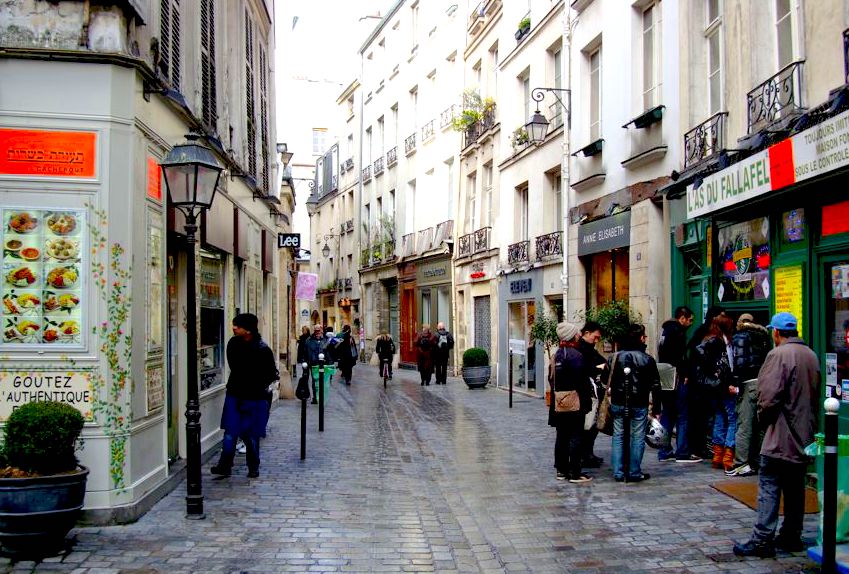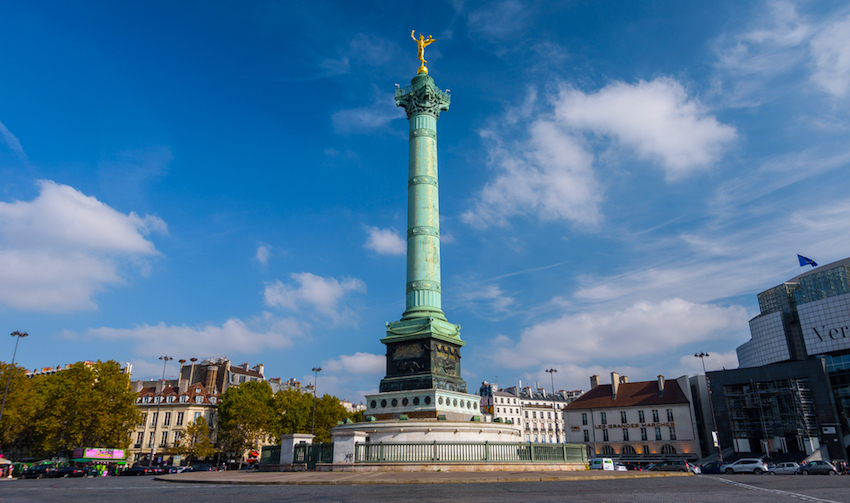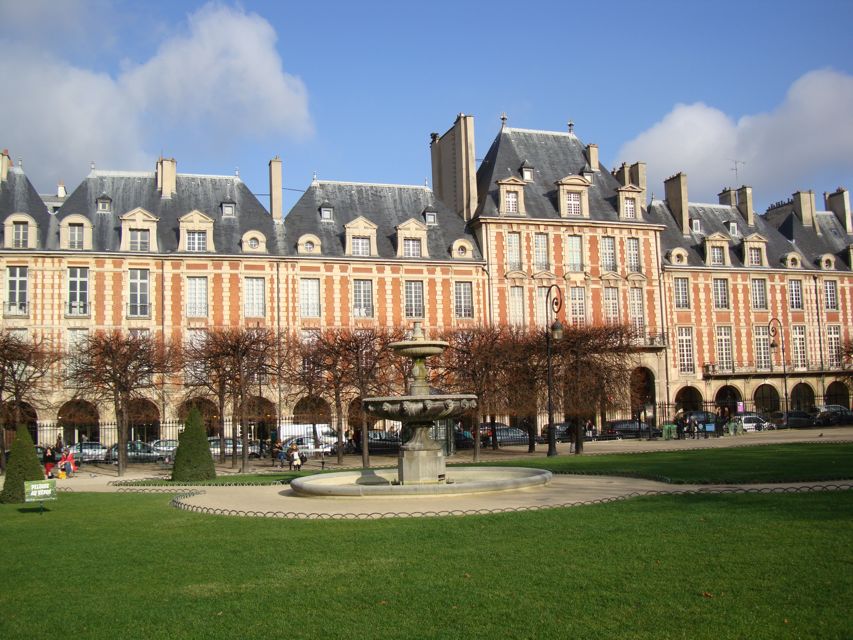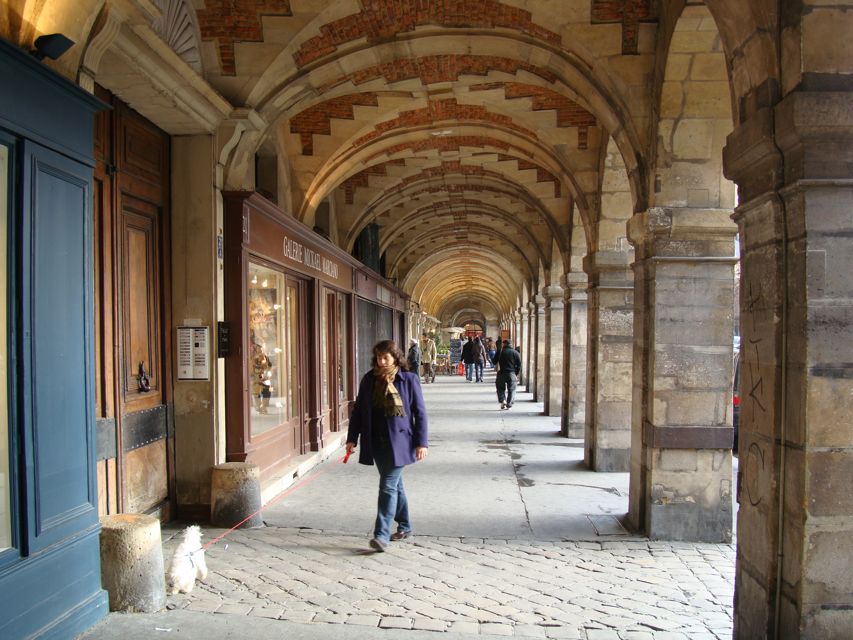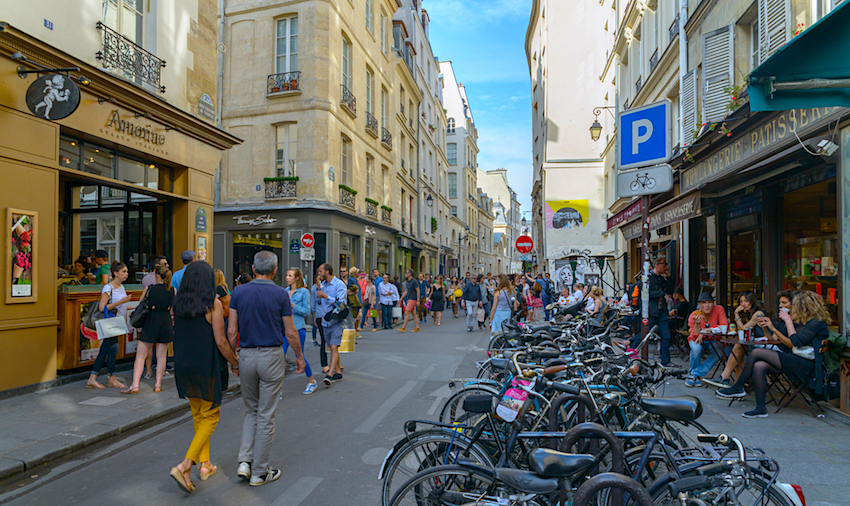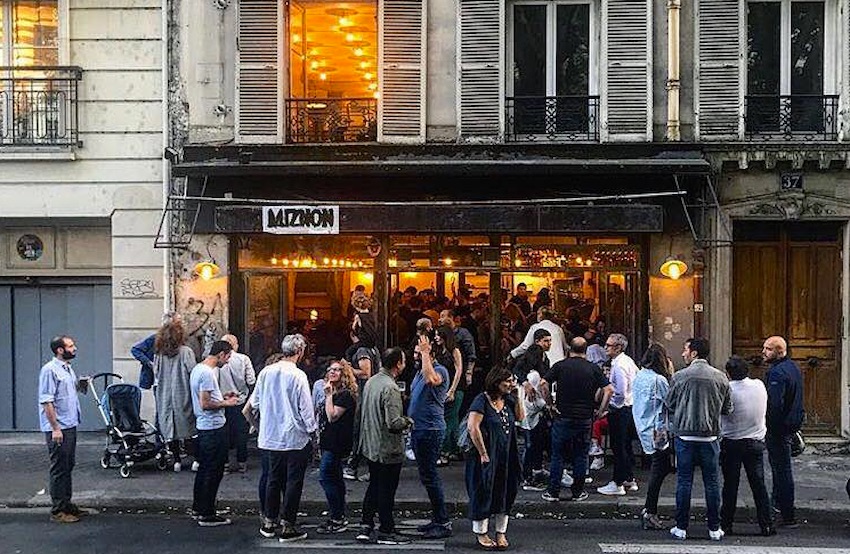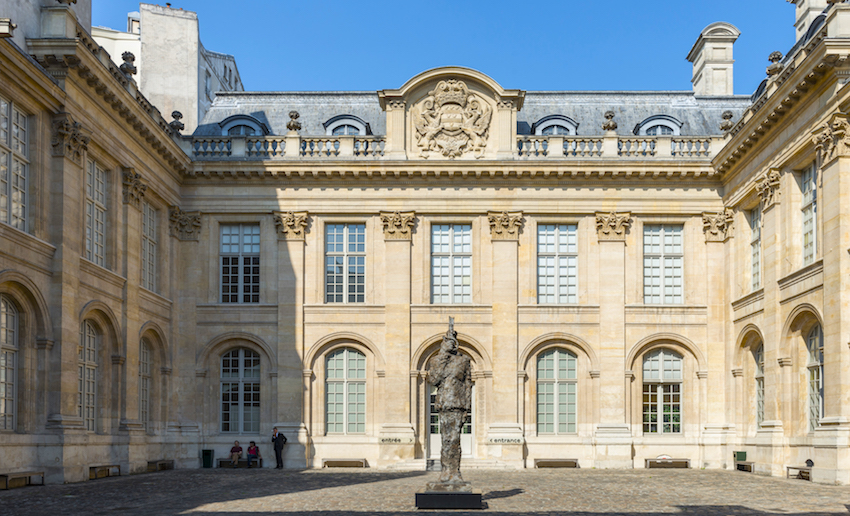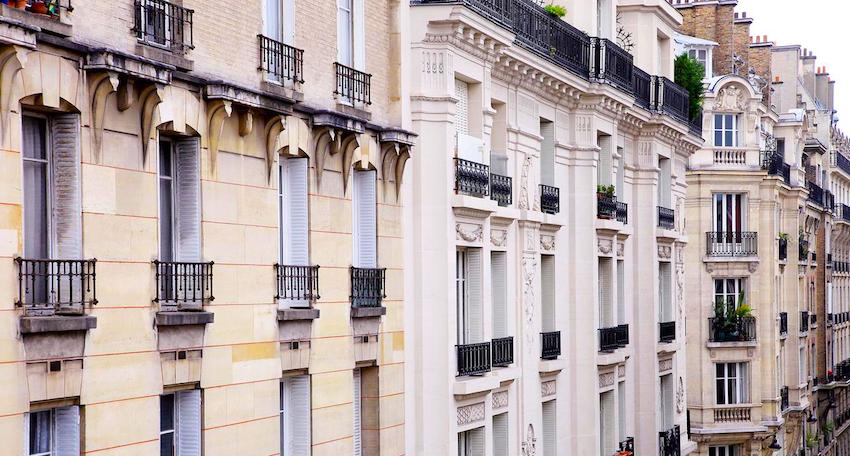The Marais
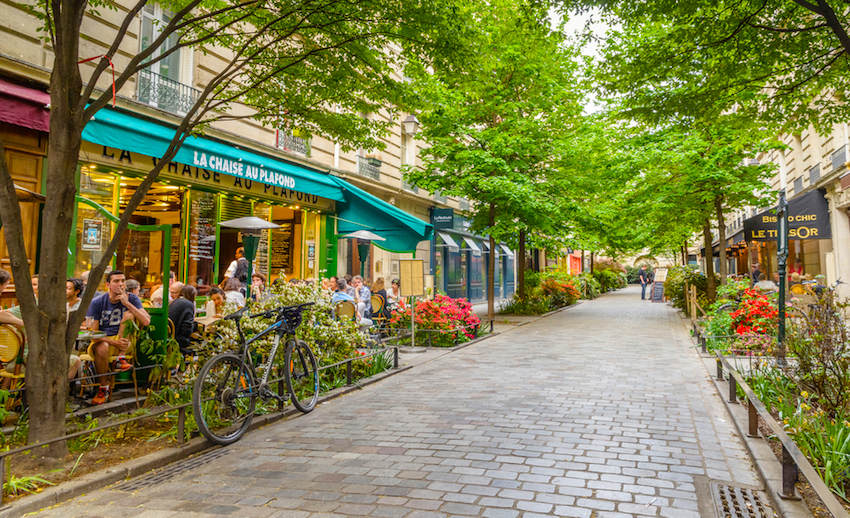
|
Tourists on their way to Paris often say, we want to stay near the center so where should we stay? The answer is always another series of questions: What can you afford? Do you want small and quaint? Broad and regal? Near the River? Near the crooked lanes of Montmartre? It is entirely a personal choice. One thing is certain, you can't go to Paris and skip the Marais. It's very similar in feel to the West Village in Manhattan, with a different architecture of course, but the small crooked medieval lanes are alive with bars, restaurants, hotels, high and low fashion boutiques, trendy shops, hip designers, old fashioned bread shops, jewelry, wine shops, fashionable art galleries and museums all crammed into one small area. |
|
Le Marais is the closest you will get to the feel of medieval Paris and has more pre-revolutionary buildings and streets left intact than any other area in Paris. A glance at some of the beautiful buildings and houses indicates the wealthy status of the former residents. After the revolution, much of the area was abandoned by the rich, and poor bohemian types moved in. (almost the opposite of Soho in NY) The area was considered so squalid at this point it was nearly destroyed by city officials who wanted to modernize Paris. (A huge avenue cutting through the center of the Marais was only avoided by the start of WWI.) You should keep in mind that before Napoleon showed up the Marais is what most of Paris looked like--- a labyrinth of cobblestone alleys. The rest of Paris was razed by Napoleon and Haussman who wanted to build huge avenues and gigantic squares such as the Place Concorde. These are now the glory of Paris, but they were originally conceived so that armies and artillery could be moved around the city to keep the poor in check and defeat invaders. On a more metaphysical level, the purpose of such broad space is to make the citizen feel small and powerless when faced with the giant civic machine of government, or an obedient army. In the Marais we are privy to the small and approachable Paris of the past, the place to wander in maddening circles and never find your way, the place to hole up and read Sartre or Camus in a café window or stare at that Parisian beauty with her slim cigarette and wild scarf. The Marais is also the most famous Jewish quarter in Paris and in much of Europe, still maintaining strong traditions. |
|
To begin exploring the area the best place to start is to take the metro to Bastille unless you walk from Notre Dame and the Hotel de Ville. The Bastille is the site of the great fortress that saw the beginning of the French Revolution on July 14, 1789. Nothing is left of the original historic building but a little brickwork in the ground. The giant column in the center actually commemorates two later revolutions (they got the hang of it) in the mid-1800's. The most obvious building today is the glass Opera house built by Mitterand, which looks a little like my glass brick shower stall… It was a controversial project supposed to bring Opera to the masses but that remains to be seen. As cheap as opera tickets can be, you are unlikely to see unemployed street sweepers and truck drivers at La Boheme. Notice the canal that seems to end right at the Place de la Bastille and then go take a closer look and see that it continues underground. This is the Port de Plaisance and those who take the cruise to the Canal St Martin may be surprised to find that perhaps a kilometer or so is spent under the Boulevard Richard-Lenoir before you finally emerge into the light of day. |
|
|
|
The Place des Vosges is considered by many to be the most beautifully built square in Paris. It was built by Henry IV and soon became one of the most exclusive areas to live. Napoleon himself considered it the jewel of Paris. Notice the small variations in the building's heights lining the square, the delicate brickwork, the special color tone of the stone, the exquisite park with its sculpture and tended gardens and children playing--- the scene is almost unreal at times. Victor Hugo lived at # 6 while he wrote Les Miserables but during the 19th century much of the aristocracy had abandoned the neighborhood and the area was taken over by shopkeepers and immigrants, vagrants, artisans and artists and Jews. |
|
If you are interested in what the area was like at the height of its grandeur, the Carnavalet Museum (23 rue de Sevigne) is filled with the history of Paris and is worth seeing even if it's a little confusing and nothing is in English…. but it's FREE. (closed Mondays) Nearby, at # 5 Rue Thorigny , you will find the Picasso Museum which is also worth visiting if you have any interest in art. If you have no interest in art, you have an even better reason to go--- it's time to learn a few useless facts the same way I was forced to study Boolean systems in college. The museum is closed Tuesday. |
|
If you are interested in the Jewish quarter just stroll up the rue des Rosiers. This was once the largest Jewish
community in Europe but 75% of the population died tragically in concentration camps. Today the street is packed
with delis, bakeries, old hamams, and East European Jewish restaurants. I'd recommend strolling around here on any day but
Saturday when things are a little too quiet.
The Marais is also known for its numerous art galleries and design shops. A bit like Soho in Manhattan, the high
end art tends to lean toward the more conceptual schools influenced by post-modernism and the success of Brit-Pop---
in some cases it is an enormous waste of beautiful space, in others, interesting work appears form time to time.
For those with a greater interest in the early 20th century artists, the rue de Seine in St. Germain is a better
spot to look. |
|
From Maria Tinglof who is in my Greece Travel Facebook group... "A great little Israeli hole in the wall in the Jewish part of Marais is Miznon. One of those places the locals go to and there is always a line. Small chalk board menu. One specialty is the grilled cauliflower which my husband insisted we order and was excellent he doesn't even like cauliflower. They have wraps and dinners and don't sell any fries so you will be forced to order cauliflower if you want a side. All real home cooking. Amazing cabbage rolls. I feel like it is one of those places where if you don't know what you want and order incorrectly you will be ordered to the back of the line like something out of Seinfeld. If you get there late, you will be limited to what is left on the menu. They will pour you a beer while you wait even for takeout. Very small place with lively vibe located at 22 Rue des Ecouffes (and with a second location at 37 quai de Valmy where the Canal St Martin reappears from underground." |
Le musée d’art et d’histoire du Judaïsme |
|
|
|
Housed in a magnificent 17th-century mansion, the musée d’art et d’histoire du Judaïsme has an admirable collection focusing on Judaism in Europe and around the Mediterranean from Antiquity to the present day. With its 1,000 m2 permanent collection, three exhibition spaces, media library of 26,000 titles, wide-ranging auditorium programme, library of more than 5,000 books and pedagogical workshops, it is one of the artistic highlights of Paris’s Marais quarter,
between the Centre Pompidou and the musée Picasso at Hôtel de Saint-Aignan 71, rue du Temple 75003 Paris. Visit their website |
|
Hotels in the Marais |
|
There are a few decently priced hotels in the very near vicinity. The 2-star Hotel Agora is situated in a pedestrian street a few steps from the Pompidou Centre. The 3-star Hôtel Turenne Le Marais benefits from a central location, near Place des Vosges as does the Hotel Caron. The 3-star Hotel de la Bretonnerie is probably your best bet, located in the heart of the Marais district, near the picturesque Place des Vosges. Rooms are individually decorated and include free Wi-Fi access. The design Hotel Duo features a sauna and fitness room. and air-conditioned rooms with free Wi-Fi access and a minibar. The charming Hotel Saint-Louis Marais is situated in the centre of the Marais District, just 1,000 feet from the Ile Saint-Louis. It offers free WiFi throughout the property. There are also loads of apartments in the area which you can find buy using the maps and search options in the Paris Hotel Search |
Help Support Matt's Paris Guide
Do you enjoy using my site? Have you found it entertaining as well as useful? If so please show your appreciation by booking hotels through the links found on my Hotels Page. The small commission I make on the bookings enable me to keep working and in most cases you won't find them any cheaper by searching elsewhere. You can
also book at Booking.com's Paris Page and they give me a small percentage on each booking. If you are appreciative of all the free information you
get on my websites you can send a donation through Paypal.

